Abstract: On the basis of explaining the key technologies of the 3G interactive video gateway, a specific design and implementation scheme of the gateway is proposed, and the test results under the actual 3G network environment are given. Test results show that the gateway is stable and has a high connection rate, which can better meet the needs of operators to provide 3G video value-added services. The issuance of 3G licenses marks the official sounding of the horn of China Mobile to 3G technology upgrade. The most important difference between 3G networks and 2G networks is that the bandwidth has been greatly improved. Therefore, mobile operators use the latest voice and video interaction technologies to provide 3G mobile phone users with many new emerging technologies such as video conferencing, video on demand and remote monitoring. Value-added interactive video services. At present, the 3G networks laid by major operators are basically based on 3GPP R4. Real-time video applications use the circuit domain 3G-324M protocol standard, and most value-added application servers use the SIP protocol standard. Therefore, in order to solve the interconnection of two different types of networks to provide rich multimedia value-added applications, a 3G interactive video gateway is required to convert media formats and control messages between different protocols. Figure 1 shows the gateway's multimedia value-added application services. Location in the architecture. This article first briefly introduces the key technologies involved in the 3G interactive video gateway, then proposes a specific design and implementation method of the gateway, and finally gives the test situation in the actual environment. Figure 1 3G multimedia value-added application service architecture. 1 3G interactive video gateway key technology introduction 1.1 3G-324M protocol The 3G-324M protocol is a framework standard formulated by the 3GPP organization based on ITU-T H324 / M. The protocol is mainly used to provide high-quality real-time multimedia communication in a low-bandwidth (usually 64kbps) environment. With the help of the 3G-324M protocol, 3G terminals can not only conduct real-time video calls with other 3G terminals, but also communicate through 3G interactive video gateways and various value-added application servers to obtain interactive video value-added services such as video conferencing Video on demand, remote monitoring, etc. The 3G-324M standard is a standard system that includes the following sub-protocol standards: audio coding standards (3GPP-AMR, G.723.1), video coding standards (H.263, MPEG-4, H.261), and data coding standards ( V.14, LAPM (Link Access Procedure for Modems), multiplexing and demultiplexing protocol (H.223) and call control protocol (H.245). H.223 protocol is divided into two layers: adaptation layer and multiplexing layer. The role of the adaptation layer is to adapt to different types of data and provide related error control. The role of the multiplexing layer is to interleave multiple media streams such as video, audio, user data and control messages (H.245) into one Media stream, so that it can be transmitted on the transmission channel. The H.245 protocol specifies the control message exchange standard at each stage of the session. The main logical processes defined by H.245 include the master-slave decision process, capability exchange process, logical channel switching process, multiplexing table initialization / modification process, and mode. Request process, etc. 1.2 SIP protocol The SIP protocol is a signaling protocol proposed by the IETF for multimedia communication on the Internet. It is one of the core protocols of the next generation network (NGN) [6]. SIP is a signaling protocol that works on the application layer and can be used To establish, modify, and terminate a multimedia session that involves multiple parties. Generally, SIP protocol uses RTP protocol to transmit audio and video streams, and SDP protocol for media description. Figure 2 Basic SIP session flow. A simple SIP session flow is shown in Figure 2. First Alice sends an INVIte message to Bob to invite Bob to join the SIP session. The INVITE message carries the SDP information describing Alice's audio and video codec format and communication port. After receiving the INVITE message, Bob sends a 200 OK message to Alice, a 200 OK message It carries the SDP information describing the codec format selected by Bob and Bob's communication port. After receiving the 200 OK message, Alice sends an ACK message to Bob. At this time, the three handshake is completed and the media session is entered. After the media session is completed, Bob sends a BYE message to Alice to end the SIP session. After receiving the BYE message, Alice sends an ACK confirmation message to Bob. Because the SIP protocol has obvious advantages such as simplicity, flexibility, scalability, and openness, people's enthusiasm for it is constantly rising, and more and more people are using SIP to build the next-generation value-added business platform. 1.ANTENK Flexible Printed Circuit (FPC) and Flexible Flat Cable (FFC) connectors are ZIF (zero insertion force) and LIF (low insertion force) connectors designed to provide a fast, easy, reliable method to make a connection of flexible printed circuits to a PCB. Adam Tech`s special contact design completely preserves conductor integrity by eliminating all wiping action while making connection. Flex circuitry enters the connector and the connector cap is pressed down to capture the flex circuit producing a stable, high pressure connection. Raising the cap releases the pressure for exchange or replacement of circuitry. This series includes single and dual row versions in thru-hole or SMT mounting in vertical or horizontal orientations.
2.Our products are widely used in electronic equipments,such as monitors ,electronic instruments,computer motherboards,program-controlled switchboards,LED,digital cameras,MP4 players,a variety of removable storage disks,cordless telephones,walkie-talkies,mobile phones,digital home appliances and electronic toys,high-speed train,aviation,communication station,Military and so on
FFC Connector Range Available as:
Specifications:
Voltage:500 V AC(rms)/DC
Current:0.5 A AC(rms)/DC
Insulation Resistance:800 MΩ min
Fpc Connector,Fpc Cable Connectors,Ffc Cable Connectors,Pitch Fpc Connector,Surface mount FPC/FFC Connectors,Top entry FFC Connectors, Side entry FFC Connectors ShenZhen Antenk Electronics Co,Ltd , https://www.antenkcon.com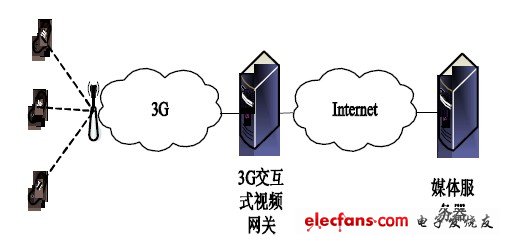
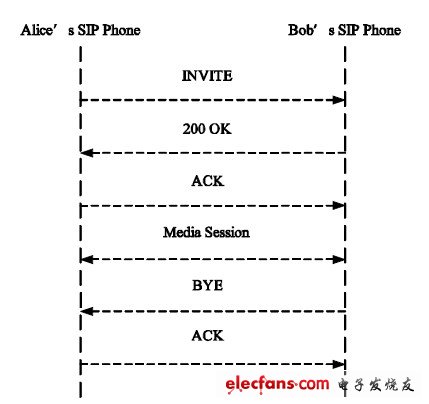
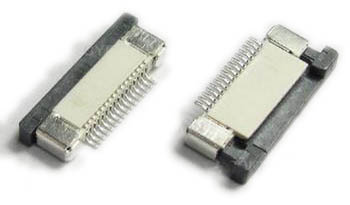
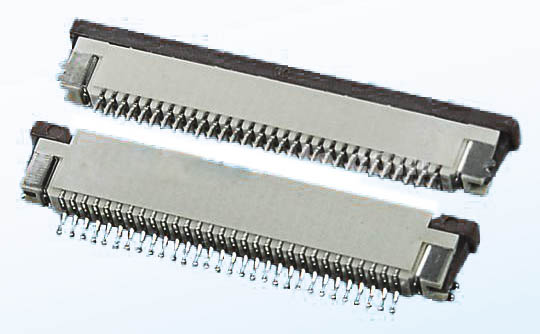
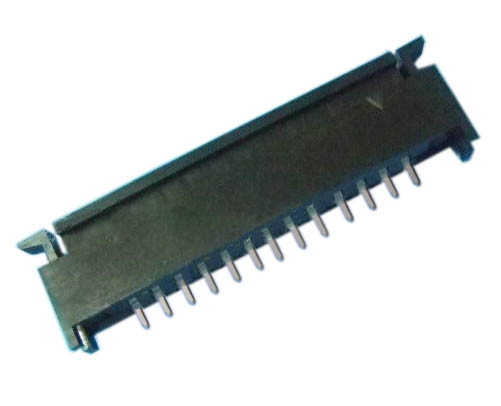
0.3,0.5, 0.8, 1.0,1.25, 2.54mm connector pitch
Surface mount
Side and Top entry
Side entry parts - Top and bottom contact options
ZIF (Zero Insertion Force)
Slide and flip lock actuator styles
Material And Finish:
Insulator: LCP
Lock: PPS
Insert Spring:Phosphor Bronze,
Matte Tin Plated
Solder Platten Area:Phosphor
Bronze,Matte Tin Plated
Contact Resistance:20 mΩ max(initial)
Operating Temp:-20°-85°